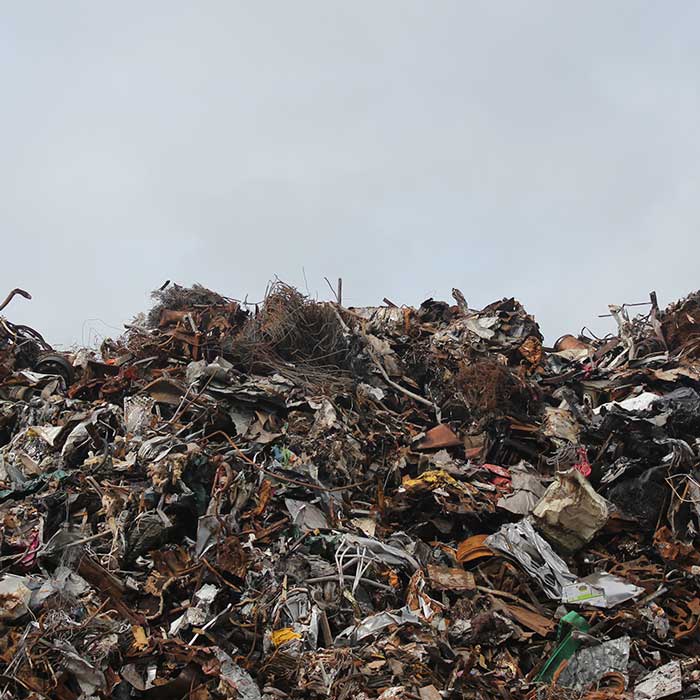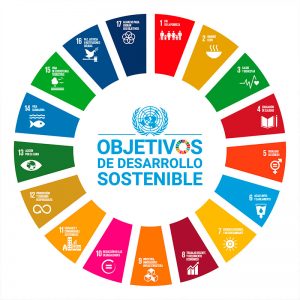“After the profound global impact of the COVID-19 pandemic, we face significant social, economic and environmental risks. But at the same time, we have an opportunity, albeit unique, to redefine a production model that guarantees economic and environmental sustainability”
The great technological challenge
Universal access to technology has been a source of unprecedented progress on a global scale. But in turn, its rapid advancement and massive technological consumption pose a major challenge in responding to the large amount of waste electrical and electronic equipment (WEEE) generated annually.
The increasing consumption of electrical and electronic equipment, coupled with shorter lifecycles and limited repair options, has led to WEEE becoming the fastest growing category of household waste worldwide.
Recently, the “Global E-Waste Monitor 2020”, has been published which is the result of the collaboration of Global E-Waste Statistics Partnership (GESP), made up of United Nations University (UNU), the International Telecommunication Union (ITU) and the International Solid Waste Association (ISWA), in collaboration with the United Nations Environment Programme (UNEP).
This international study provides the most comprehensive description of the global challenge posed by WEEE by explaining how it fits into international efforts to achieve the Sustainable Development Goals (SDGs), and analysing how to create a sustainable and circular economy-oriented society.

The study concludes that in 2019 a new record was set for the generation of WEEE worldwide with a total of 53.6 million metric tonnes, an increase of 21% in just five years. It also predicts that the generation of this waste will rise to 74 million tonnes in 2030, doubling in just sixteen years.
But the truly worrying statistic is that only 17.4% of WEEE worldwide was collected and recycled in 2019, which means that instead of being recovered for treatment and subsequent reuse or recycling, it was discarded.
WEEE that escapes from proper waste collection and treatment processes poses a significant threat to the environment and to human and animal health due to the presence of potentially polluting substances such as mercury, brominated flame retardants (BFRs), chlorofluorocarbons (CFCs) among others.
The need for a common agenda
Over the last few years, there has been an important boost in various aspects at the international level with the common denominator of sustainability as the central axis. These initiatives include the development of the United Nations Agenda 2030 for Sustainable Development, which establishes an action plan aimed at promoting people, the environment and prosperity, while strengthening universal peace and access to justice.
The Agenda sets out 17 Sustainable Development Goals (SDGs) covering the economic, social and environmental sectors. The Agenda calls for a change in the production and consumption model, including a transition to a more resource efficient circular economy model.
Therefore, it is necessary to minimise both the consumption of raw materials and energy, as well as the generation of waste, and some of these objectives are particularly relevant for this reason.
Goal 9: Industry, innovation and infrastructure
It covers aspects such as the promotion of sustainable industries, technological advances to find solutions to economic and environmental challenges, or the promotion of energy efficiency.
Goal 13: Climate action
Reducing greenhouse gas (GHG) emissions, adapting to climate change and investing in low-carbon development are some of its main lines of action.
Goal 17: Alliances to achieve goals
Alliances between governments, the private sector and civil society are essential, and must be built on shared commitment to a vision, values and goals that put people and the planet at the centre.

The proper management of WEEE can make a critical contribution to the achievement of SDGs especially in mitigating the effects of global warming, both through the reduction of greenhouse gas emissions and the recovery of raw materials.
To put this into context, it should be noted that the above-mentioned report indicates that in 2019, 98 million tonnes of CO2 equivalent were released into the atmosphere from discarded refrigerators and air conditioners, equivalent to 0.3% of global greenhouse gas emissions.
On the other hand, estimates suggest that around $57 billion in recoverable materials were lost in this way, a figure that exceeds the gross domestic product (GDP) of most countries in the world.
Towards a genuine cultural change
The COVID-19 pandemic has undoubtedly shaken the foundations of societies and economies around the world, and while recovery poses phenomenal challenges, there are also great opportunities ahead.
According to a study carried out by the Spanish Association of Social Responsibility Managers (DIRSE) and the professional services firm Ernst&Young, 86% of professionals related to Corporate Social Responsibility (CSR) believe that their role will change in the “new normality”, giving greater priority to health and digitalisation, and 64% think that the changes will be permanent.
The post-pandemic reconstruction brought about by COVID-19 will stimulate CSR policies with substantial changes in the face of growing concerns about health, social impact and digital talent. We can therefore expect a cultural change in companies and administrations in the coming years, with the adoption of new values and ways of working that give greater importance to the well-being of people and the conservation of the environment.
In this change, we can anticipate that technology will be a key element of both the present and future. And in the face of this reality, the promotion of a model of a circular economy that is more efficient in the use of available resources and oriented towards sustainability in the broadest sense will be fundamental.
However, such a transformation will require a reformulation of the productive model, incorporating aspects such as prevention in the generation of waste, preparation for reuse when feasible, and recycling of waste to recover the materials it contains, avoiding the extraction and consumption of finite natural resources. Because both the recovery of the economy and the future of our planet depend on this.


